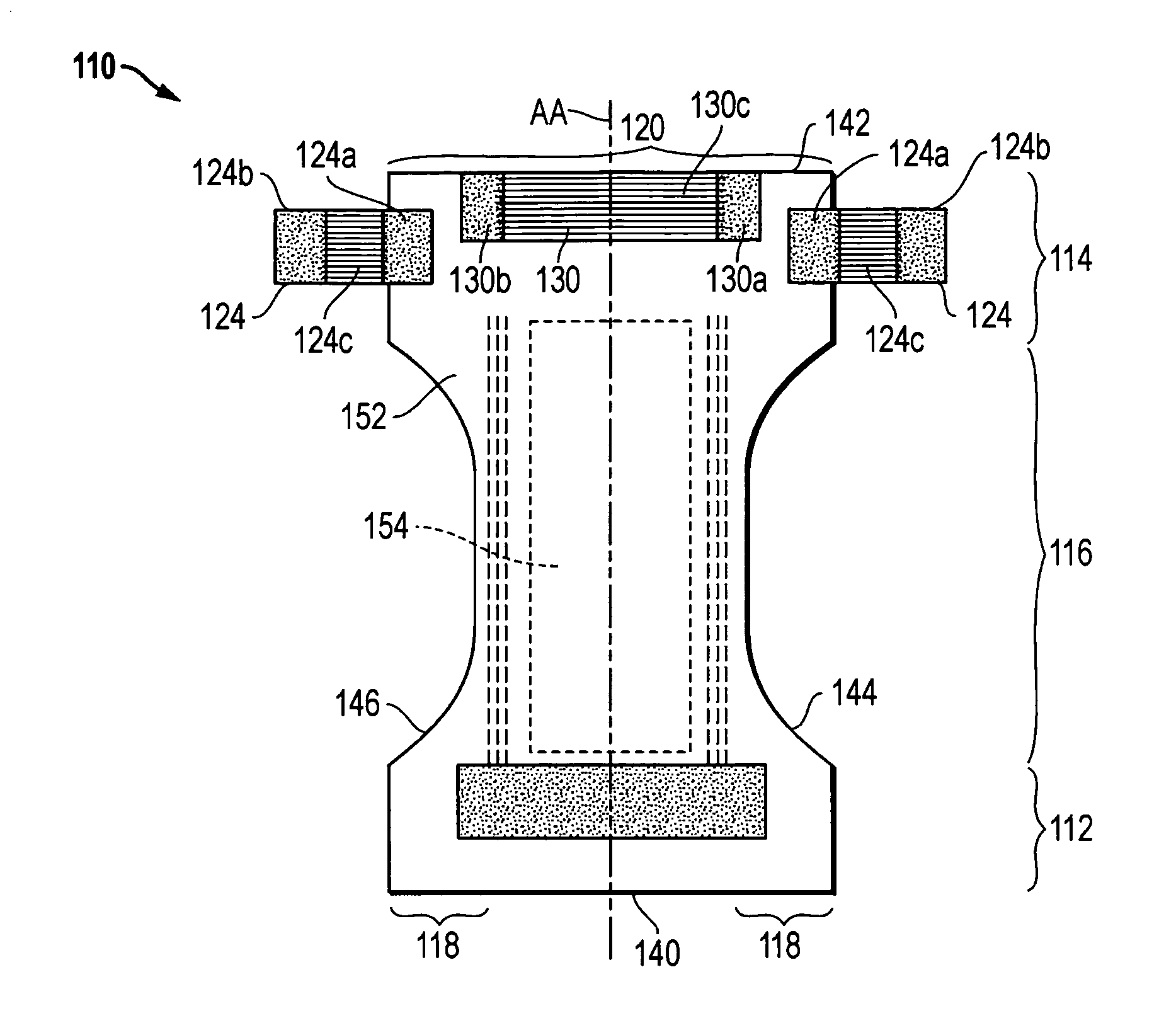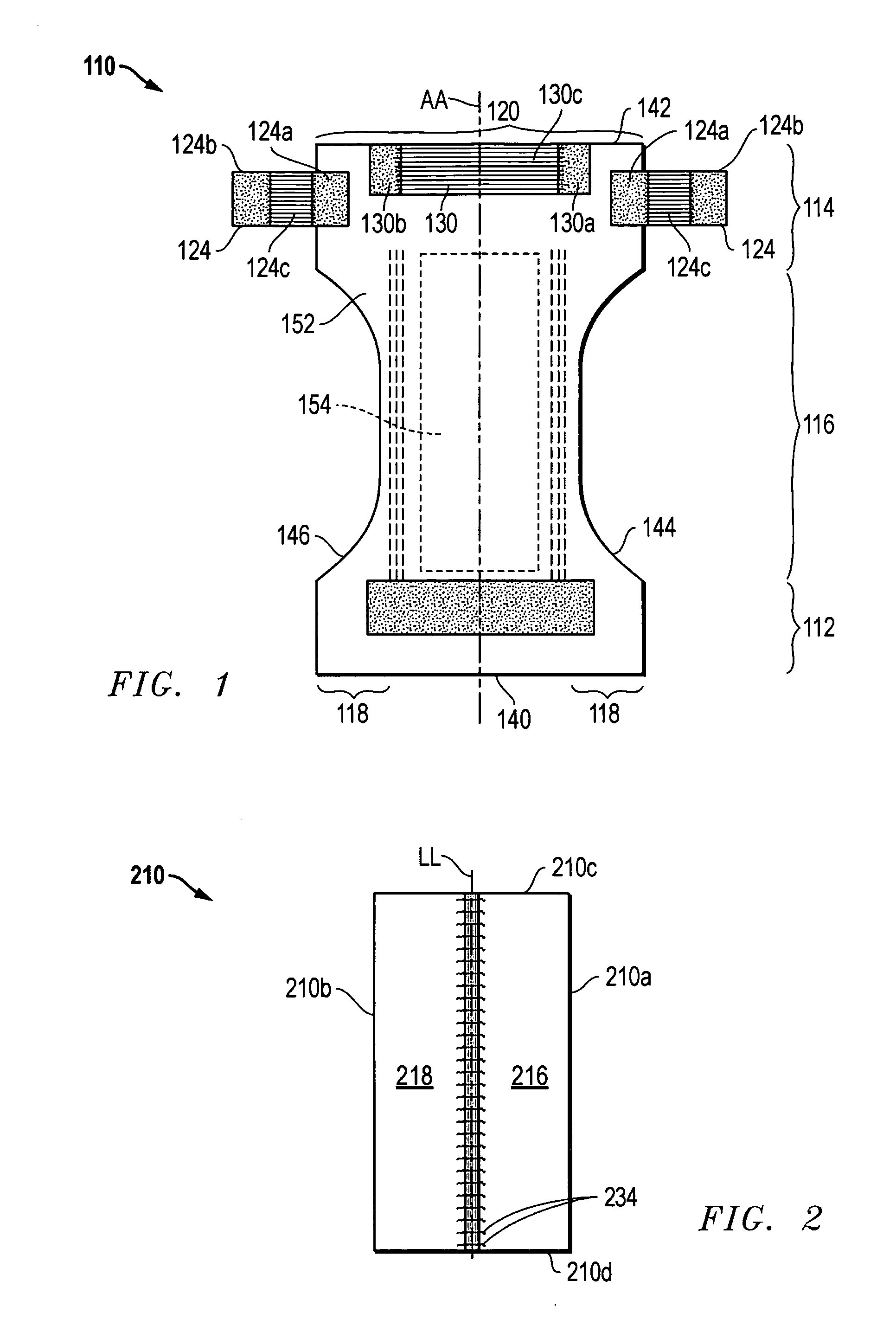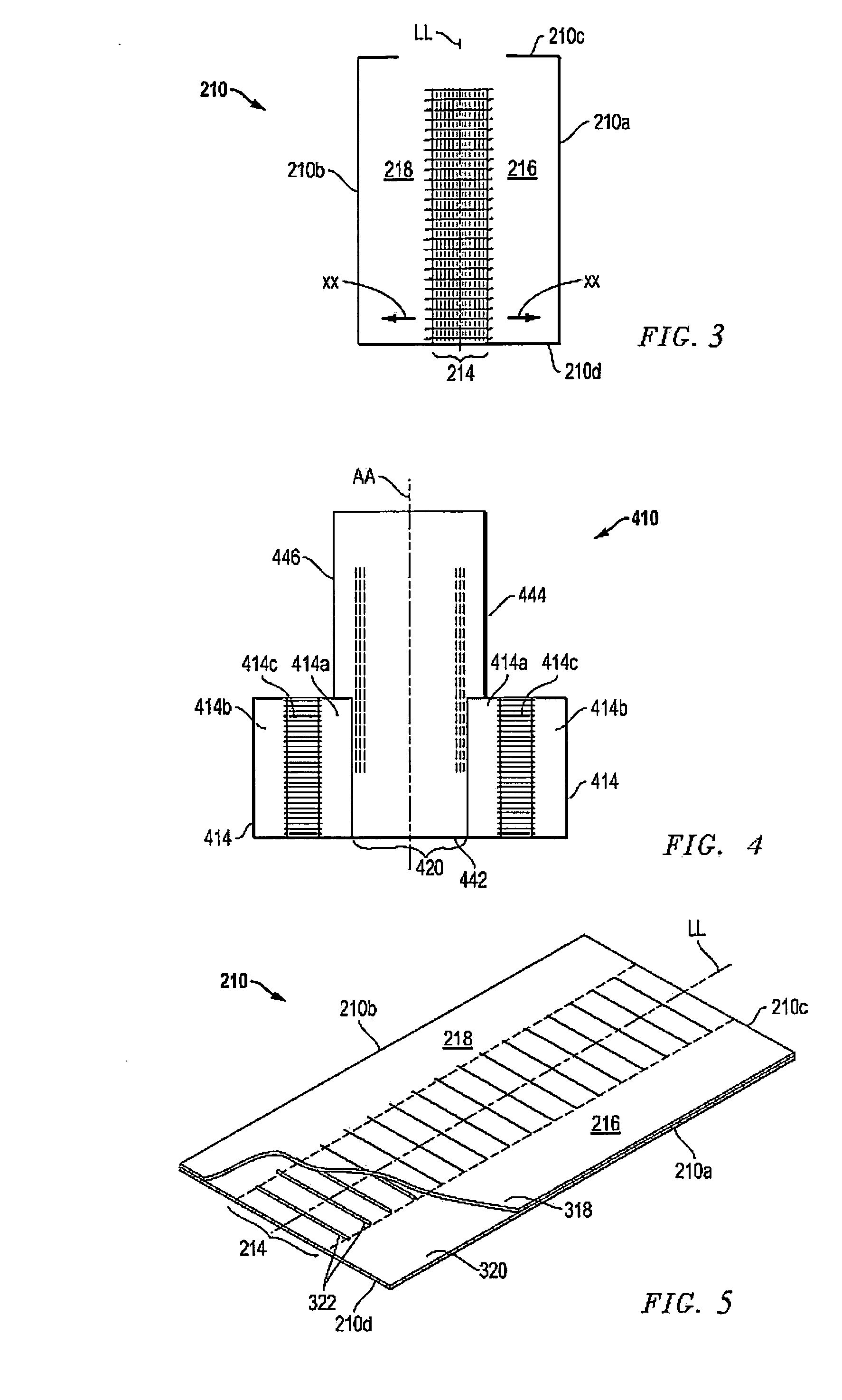Elastic composite having cross-directional elasticity and a system and method for making the elastic composite
- Summary
- Abstract
- Description
- Claims
- Application Information
AI Technical Summary
Benefits of technology
Problems solved by technology
Method used
Image
Examples
example 1
[0091]In one embodiment of the invention, the width of open elastic region may be approximated as follows:
[0092]Given, conveyor width, W=100 mm;
[0093]distance, d, from upper surface of upper conveyor to lower surface of lower conveyor=40 mm;
[0094]extension applied to continuous elastic strand=4×;
[0095]full extension of elastics=5×.
Widthofopenelasticregion(fullyextended)=5×((100mm+100mm+(40mm×2)) / 4)=350mmWidthofopenelasticregion(relaxed)=(100mm+100mm+(40mm×2)) / 4=70mm
example 2
[0096]In a more preferred embodiment, the width of the open elastic region is increased by reducing the extension applied to the elastic strand as it is applied to the nonwoven carrier web. The circumference of the conveyor assembly is also increased by increasing the separation of the upper and lower conveyors. In some suitable systems, one of the conveyor platforms is simply moved further from the other platform. It should also be noted that one of the conveyors is not required to move a sheet of material, but only the elastic wrapped about it. This allows for use of conveyors different from the generally flat platforms or belts commonly used to support a sheet of nonwoven.
[0097]Given, conveyor width, W=100 mm,
[0098]distance, d, from upper surface of upper conveyor to lower surface of lower conveyor=100 mm,
[0099]extension applied to elastics=1.5×,
[0100]full extension of elastics=5×.
Openelasticregion(fullyextended)=5×((100mm+100mm+(100mm×2)) / 1.5)=1333mmOpenelasticregion(relaxed)=(1...
PUM
| Property | Measurement | Unit |
|---|---|---|
| Width | aaaaa | aaaaa |
| Elasticity | aaaaa | aaaaa |
Abstract
Description
Claims
Application Information
 Login to View More
Login to View More - R&D
- Intellectual Property
- Life Sciences
- Materials
- Tech Scout
- Unparalleled Data Quality
- Higher Quality Content
- 60% Fewer Hallucinations
Browse by: Latest US Patents, China's latest patents, Technical Efficacy Thesaurus, Application Domain, Technology Topic, Popular Technical Reports.
© 2025 PatSnap. All rights reserved.Legal|Privacy policy|Modern Slavery Act Transparency Statement|Sitemap|About US| Contact US: help@patsnap.com



